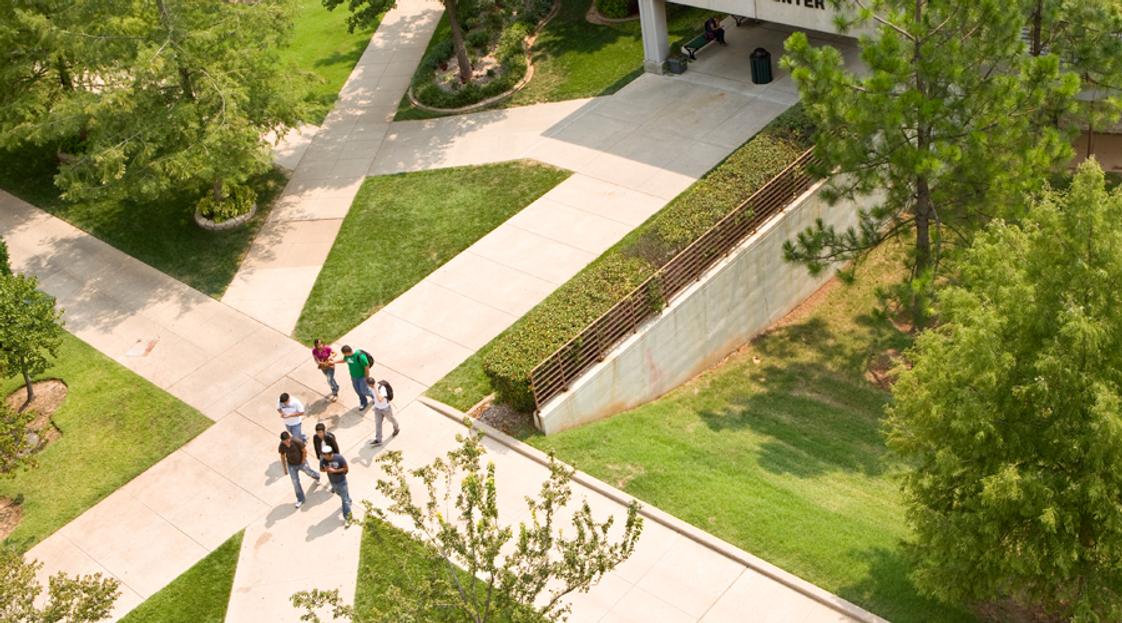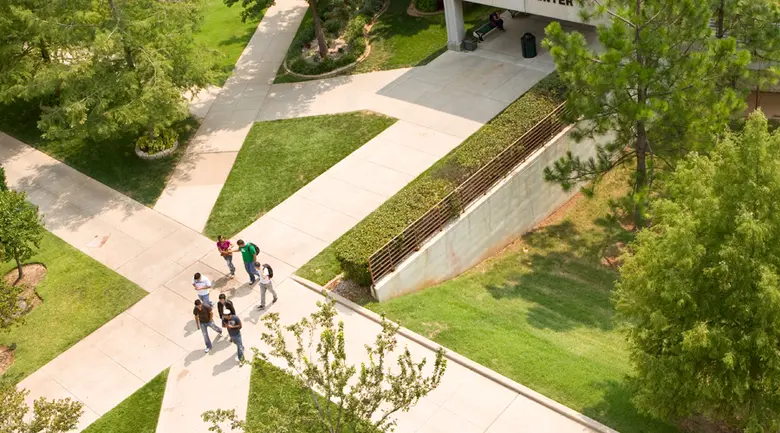- Our mission is to provide collegiate level career and transfer educational programs as well as supportive services, which will prepare individuals to live and work in an increasingly technological and global community.
School Highlights
Oklahoma State University-Oklahoma City serves 6,745 students (14% of students are full-time).
The college's student:teacher ratio of 21:1 is higher than the state community college average of 18:1.
Minority enrollment is 46% of the student body (majority Hispanic and Black), which is less than the state average of 56%.
Quick Stats (2025)
- Enrollment: 6,745 students
- In-state tuition: $2,661
- Out-state tuition: $7,224
- Student:teacher ratio: 21:1
- Minority enrollment: 46%
- Source: Integrated Postsecondary Education Data System (IPEDS)
Top Rankings
Oklahoma State University-Oklahoma City ranks among the top 20% of public schools in Oklahoma for:
Category
Attribute
Community Size
School Overview
The teacher population of 318 teachers has stayed relatively flat over five years.
Oklahoma State University-Oklahoma City
(OK) Community College Avg.
Carnegie Classification
Baccalaureate/Associate's Colleges: Associate's Dominant
Baccalaureate/Associate's Colleges: Mixed Baccalaureate/Associate's
Institution Level
Four or more years
At least 2 but less than 4 years
Institution Control
Public
Public
Total Faculty
318 staff
154 staff
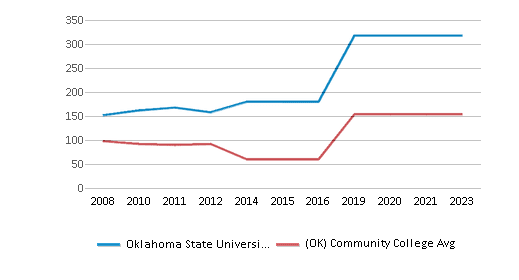
School Calendar
Student Body
The student population of Oklahoma State University-Oklahoma City has grown by 26% over five years.
The student:teacher ratio of 21:1 has increased from 16:1 over five years.
The Oklahoma State University-Oklahoma City diversity score of 0.66 is less than the state average of 0.76. The school's diversity has stayed relatively flat over five years.
Total Enrollment
6,745 students
1,473 students

Student : Teacher Ratio
21:1
18:1
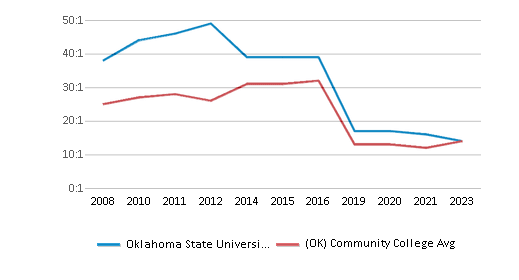
# Full-Time Students
943 students
663 students
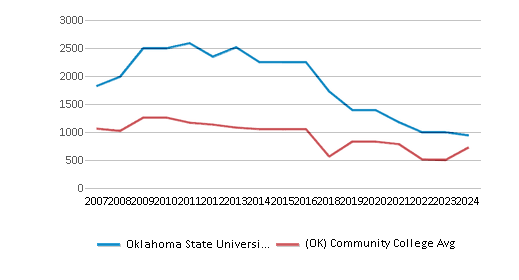
# Part-Time Students
5,802 students
1,058 students
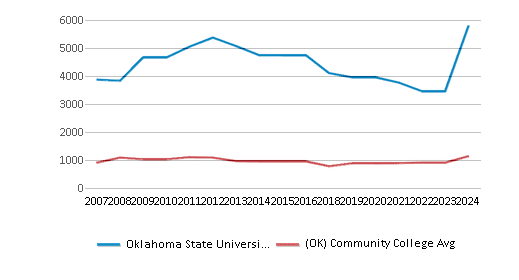
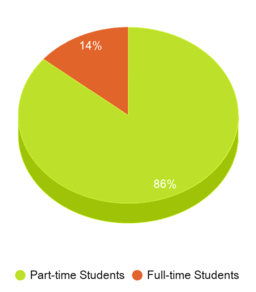
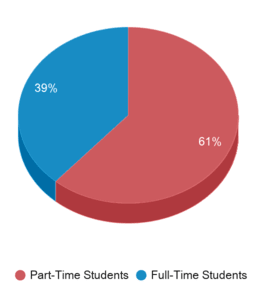
# Enrollment Undergraduate
674 students
236 students
# Full-Time Undergraduate Students
943 students
610 students
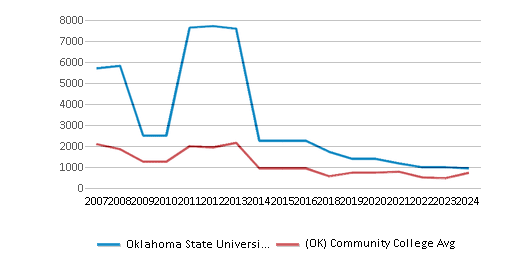
# Full-Time Graduate Students
n/a
5 students
# Part-Time Undergraduate Students
5,802 students
972 students
# Part-Time Graduate Students
n/a
14 students
Total Dormitory Capacity
n/a
300 students
% American Indian/Alaskan
4%
8%
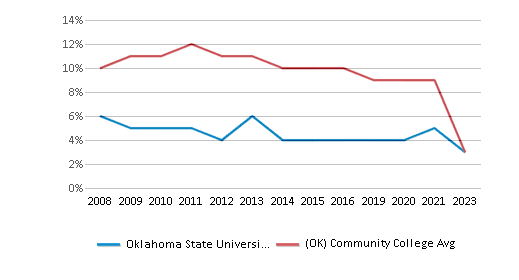
% Asian
3%
4%
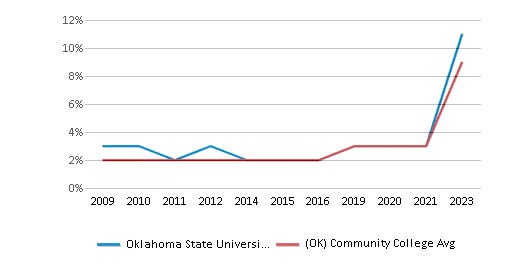
% Hispanic
17%
11%
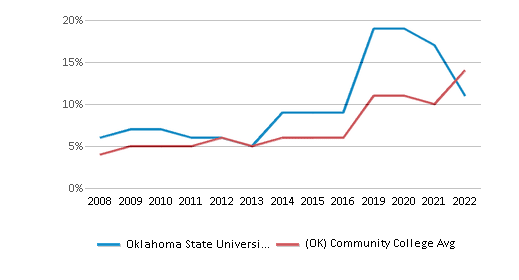
% Black
11%
10%
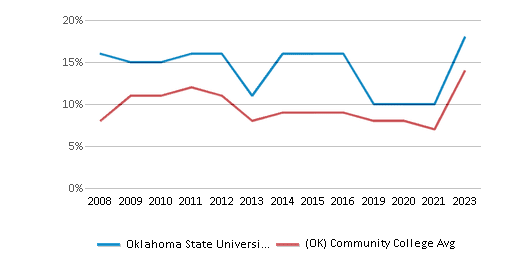
% White
54%
44%
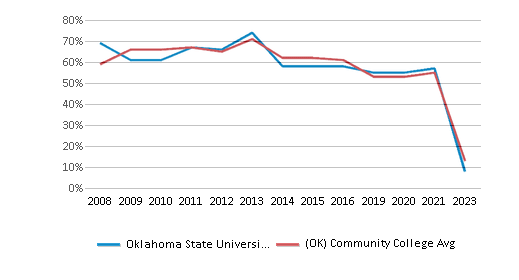
% Hawaiian
n/a
8%
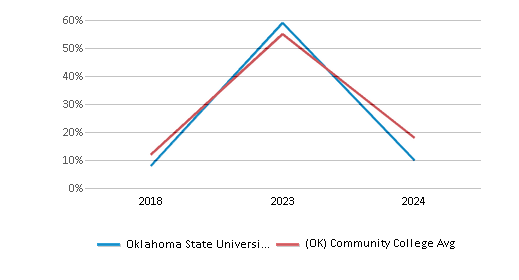
% Two or more races
8%
10%
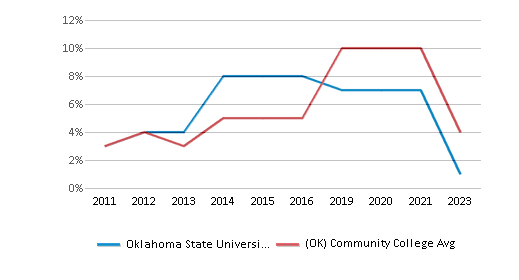
% Non Resident races
1%
1%
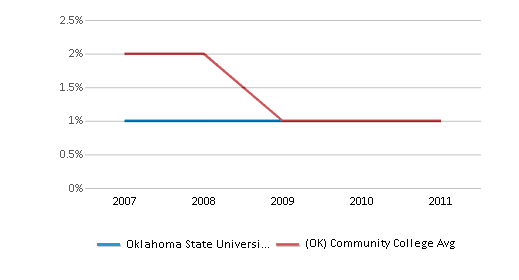
% Unknown races
1%
4%
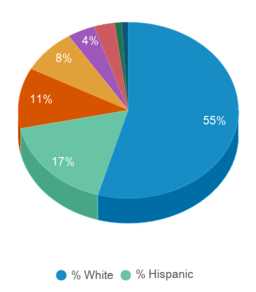
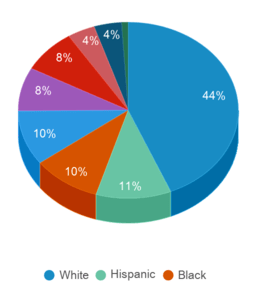
Diversity Score
0.66
0.76
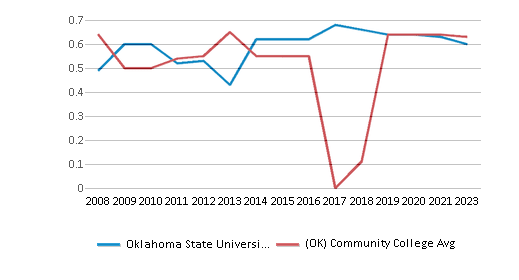
College Completion Rate (Students who graduate in less than 4 years) (Year 2007)
6%
25%
College Completion Rate (Students who graduate in 4 years or more than 4 years)
0.1283%
0.1525%
Average Graduate Earnings (10 Years)
$38,500
$34,700
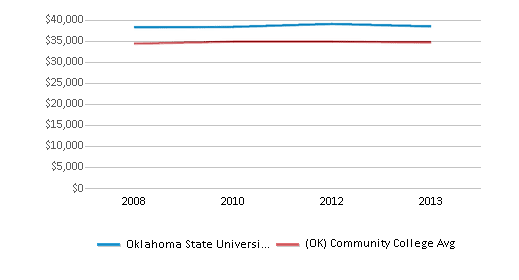
Tuition and Acceptance Rate
The public in-state tuition of $2,661 is less than the state average of $3,475. The in-state tuition has declined by 29% over four years.
The public out-state tuition of $7,224 is less than the state average of $7,963. The out-state tuition has declined by 24% over four years.
In-State Tuition Fees
$2,661
$3,475
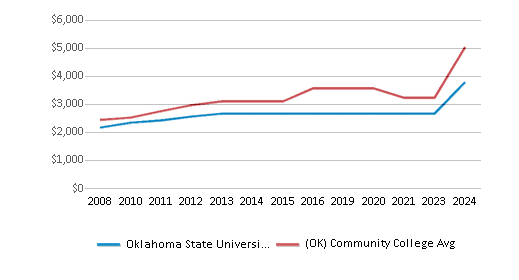
Out-State Tuition Fees
$7,224
$7,963
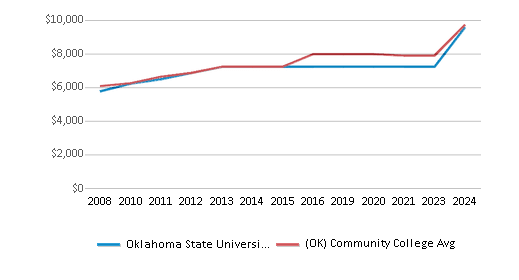
% Students Receiving Some Financial Aid
66%
88%
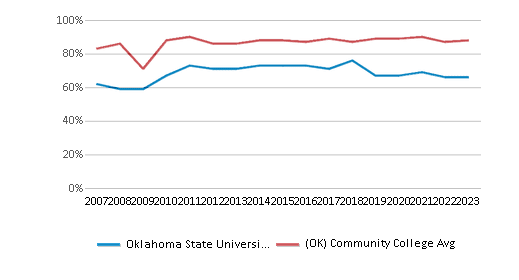
Median Debt for Graduates
$14,519
$12,000
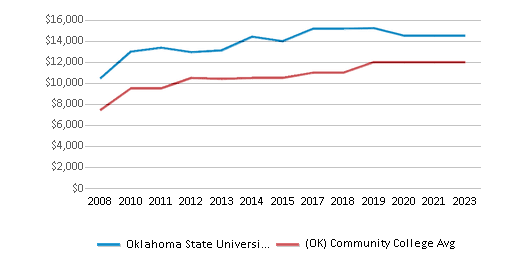
Median Debt for Dropouts
$7,031
$5,889
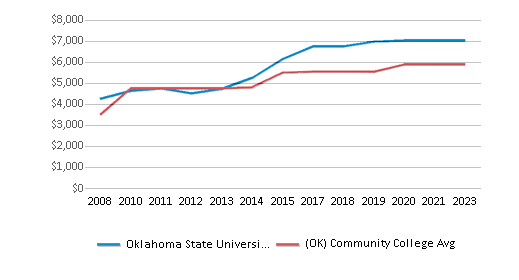
Acceptance Rate
n/a
55%
SAT Reading
n/a
387
SAT Math
n/a
475
ACT Composite
n/a
18
ACT English
n/a
17
ACT Math
n/a
18
Source: 2024 (or latest year available) Integrated Postsecondary Education Data System (IPEDS) , School Administrators
School Notes
- Oklahoma State University-Oklahoma City was originally founded in 1961 as Oklahoma State University Technical Institute, a branch campus of Oklahoma State University in Stillwater. While technology is still the basis of our institution, in 1990 we changed our name to Oklahoma State University-Oklahoma City to let people know we offer courses that prepare students for four-year colleges and the workforce. Originally located at N.W. 10th Street and Kentucky Avenue, our campus was later moved to its current location at N.W. 10th and Portland Avenue. OSU-Oklahoma City is a branch campus of Oklahoma State University in Stillwater. Academic programs are offered in Agriculture Technologies, Arts and Sciences, Business Technologies, Engineering Technologies, Health Services and Human Services. OSU-Oklahoma City offers you smaller classes taught by award winning faculty, over 40 programs and an education plan that fits your lifestyle and schedule. OSU-Oklahoma City takes pride in its student-centered approach to college education. The college currently offer over 40 associate degrees and certificates with an annual student headcount of close to 10,000 students. Classes are offered on a three semester calendar during the day, evening, weekend, via Cox Cable and on the Internet. OSU-Oklahoma City offers courses over 75 classes on-line. Oklahoma State University-Oklahoma City is accredited by and is a member of the North Central Association of Colleges and Schools Commission on Institutions of Higher Education.
Frequently Asked Questions
How much does Oklahoma State University-Oklahoma City cost?
Oklahoma State University-Oklahoma City's tuition is approximately $2,661 for In-State students and $7,224 for Out-State students.
What schools are Oklahoma State University-Oklahoma City often compared to?
Oklahoma State University-Oklahoma Cityis often viewed alongside schools like Oklahoma City Community College by visitors of our site.
What is Oklahoma State University-Oklahoma City's ranking?
Oklahoma State University-Oklahoma City ranks among the top 20% of community college in Oklahoma for: Largest student body.
In what neighborhood is Oklahoma State University-Oklahoma City located?
Oklahoma State University-Oklahoma City is located in the Central Oklahoma City neighborhood of Oklahoma City, OK.
Recent Articles

Obtaining Your Bachelor's Degree at a Community College
Explore the evolving landscape of community colleges offering bachelor's degrees, addressing affordability, accessibility, and workforce needs.

A to Z of Community College Certificates and Courses
From business and healthcare to technology and skilled trades, the article showcases the breadth of options available to students seeking to enhance their knowledge, develop new skills, or pursue career advancement.

What is a Community College?
This comprehensive guide explains what a community college is, its history, and its role in higher education. It covers the types of programs offered, differences from four-year colleges, benefits of attending, and important considerations for prospective students, providing valuable insights for those exploring educational options.

